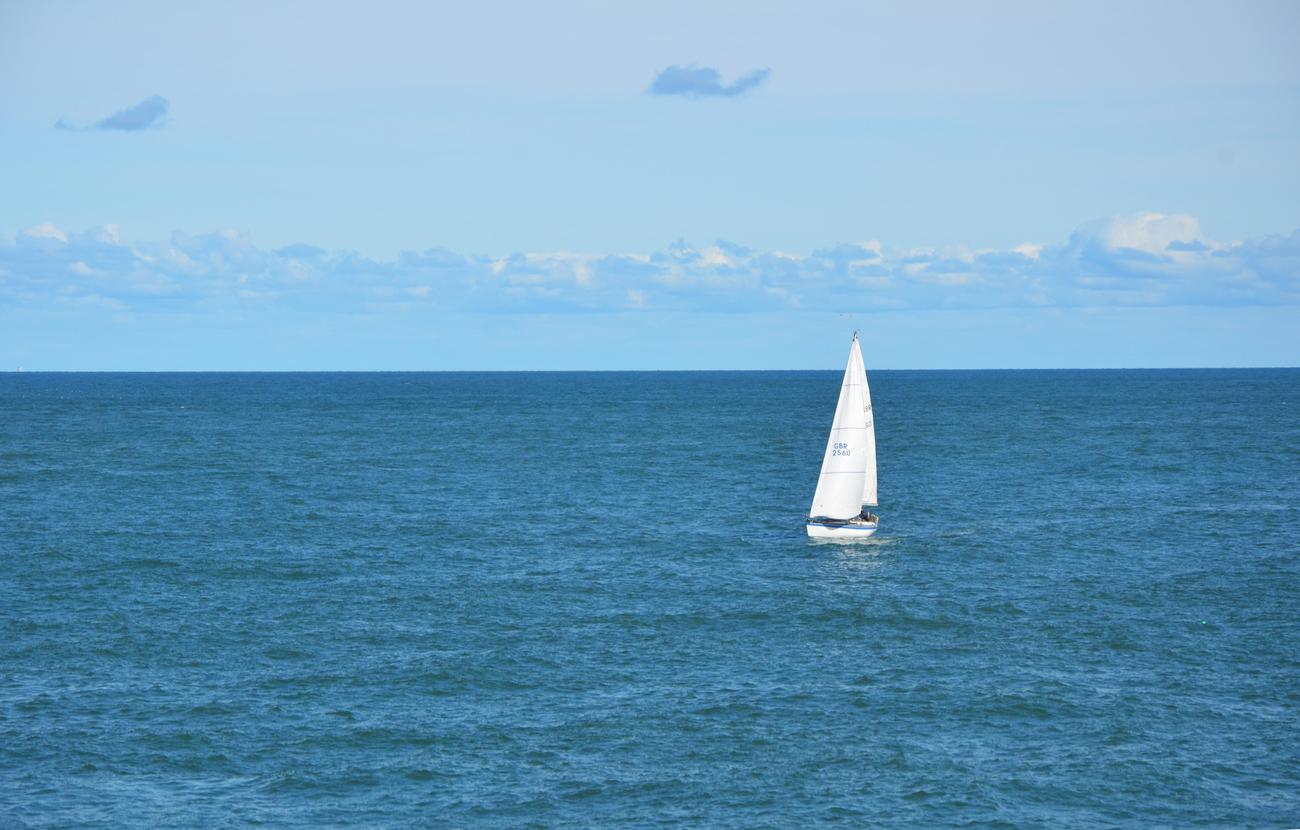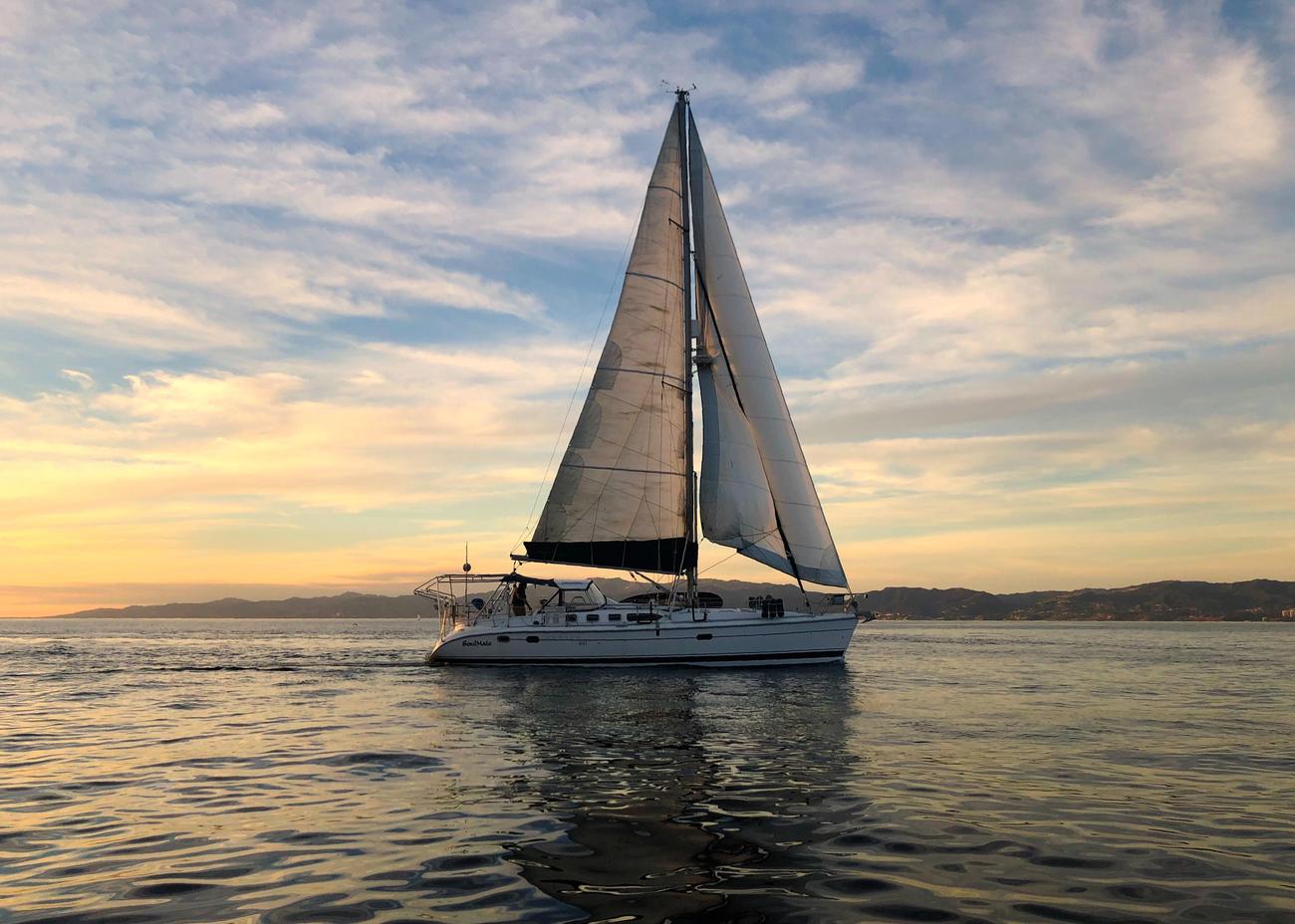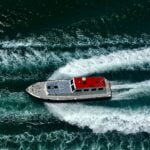Imagine a sailboat cutting through the waves, gracefully gliding into the wind. How do these vessels defy the odds and sail towards their destination even when the wind seems to oppose them? In this article, we uncover the secrets behind this seemingly paradoxical feat. We’ll explore the clever techniques, physics, and strategies that allow sailboats to harness the power of the wind and propel themselves forward, even when it’s blowing right at them. Join us as we embark on a journey into the fascinating world of windward sailing, where the art of sailing meets the science of aerodynamics.
How Do Sailboats Sail into the Wind?
Ever watched a sailboat seemingly glide effortlessly against the wind and wondered, “How is that even possible?” At first glance, it almost seems like the boat possesses a secret knowledge of the wind. In reality, it’s not magic, but rather a fascinating interplay of physics and skillful maneuvering.
To grasp this concept, let’s shift our perspective on wind. Instead of viewing it as a force that only pushes, envision it as a flow of energy that sailboats can, surprisingly, tap into.
Harnessing Pressure for Propulsion
Think of the sails as airplane wings, but instead of lifting the boat into the air, they generate a difference in air pressure that propels it forward. Here’s a breakdown:
- Curved Surface, Unequal Distance: When wind encounters the curved sail, it’s forced to travel a longer distance over the curved side compared to the flatter side.
- Pressure Imbalance: This difference in distance creates a difference in air pressure – lower pressure on the curved side and higher pressure on the flatter side.
- Forward Force: This pressure imbalance results in a force that pushes the boat forward, even if it’s pointing somewhat against the wind.
Tacking: A Zigzagging Dance
You might be asking, “But what about sailing directly into the wind?” This is where the art of “tacking” comes in. It involves a series of zigzags, where the boat strategically angles its sails to harness the wind from different directions.
Visualize this: Instead of attempting to conquer a steep hill head-on, you navigate a zigzag path, gradually ascending to the top. Sailboats utilize a similar strategy by tacking back and forth, progressively moving closer to their destination, even if it’s directly upwind.
Finding the Sweet Spot: Angle is Key
The angle at which the sail meets the wind is crucial for efficient sailing. This angle, often around 40 degrees, allows the sail to generate the ideal lift for optimal forward motion. Think of it like finding the sweet spot on a seesaw – too much weight on one side and it won’t move, too little and it’s unbalanced.
Delving Deeper: Beyond the Basics
- The Bernoulli Principle: This scientific principle plays a crucial role in generating lift. It states that faster-moving air creates lower pressure. Remember the curved sail? The faster airflow over its surface significantly contributes to the pressure difference that drives the boat forward.
- Advanced Sail Technology: Just as aircraft design has evolved, so too has sail technology. Modern sails utilize advanced materials and designs to optimize their shape and maximize their interaction with the wind, leading to impressive upwind performance.
Real-World Example: The Volvo Ocean Race
One of the most grueling sailing competitions, the Volvo Ocean Race, showcases the power of these principles in action. Sailors expertly navigate their high-tech vessels against powerful winds and challenging ocean conditions, demonstrating a deep understanding of how to leverage even the slightest wind shifts to their advantage.
A Continual Journey of Learning
The world of sailing is teeming with ongoing research and evolving techniques. Sailors, engineers, and scientists continue to push the boundaries of what’s possible, constantly refining designs and exploring new materials. So, the next time you see a sailboat gracefully gliding into the wind, remember that it’s not magic, but a testament to human ingenuity, a deep understanding of nature’s forces, and a constant desire to explore the vastness of the sea!

Can a sailboat sail directly into the wind?
The graceful dance of sailboats across the water, with their sails billowing, is a captivating sight. But can they truly sail directly into the wind?
The straightforward answer is no. They can’t sail head-on into the wind’s full force. Imagine trying to walk directly into a powerful gust – it’s simply not going to be an easy feat! However, the intriguing aspect is that sailboats can get surprisingly close to sailing against the wind. This is where the ingenuity of sailing shines through.
The Secret Lies in the Sails
The key lies in how the sails interact with the wind. These aren’t just random pieces of fabric; they are carefully designed, much like airplane wings, with a specific curved shape. As the wind flows over this curved surface, it creates a pressure differential – lower pressure on one side and higher pressure on the other. This pressure difference generates a force called lift, a concept often associated with airplanes. This lift is what propels the sailboat forward, even if it’s not sailing directly downwind.
Keel: The Balancing Act
However, if it were just about the sails, the boat would likely tip over or be pushed sideways. This is where the keel comes into play – that long, fin-like structure protruding from the bottom of the boat. The keel acts as a counterweight, providing stability and preventing the boat from simply drifting sideways with the wind. It maintains balance and enables the boat to effectively utilize the lift force generated by the sails.
Tacking: Zigzagging to the Destination
While lift and the keel are essential, sailing directly into the wind remains impossible. So, how do sailors reach their desired location if the wind is uncooperative? They use a clever technique known as tacking. Imagine the sailboat zigzagging across the water, repeatedly changing direction. That’s tacking in action! By sailing at an angle to the wind, first one way and then the other, the boat can slowly but surely make its way towards a point directly upwind.
In essence, a sailboat can’t sail directly into the wind, but it can get remarkably close by utilizing its sails, keel, and skillful maneuvering. It’s all about working with the wind’s forces, not against them. Next time you witness a sailboat seemingly defying the wind, remember that it’s not magic – it’s the clever application of physics and skilled seamanship.
How Do Sailing Ships Sail Against the Wind?
It might seem counterintuitive, but sailboats can, in a sense, sail against the wind. This remarkable feat isn’t magic; it’s a testament to the ingenuity of sailors and their understanding of the forces at play.
While it appears logical that the wind should push a sailboat backward when blowing towards the front, sailboats are ingeniously designed to utilize that wind to their advantage. They achieve this by sailing at an angle to the wind, rather than directly into it.
Harnessing the Wind’s Sideways Force
Visualize the wind as a sideways force acting upon the sail, which functions like a wing. This sideways force, combined with the sail’s shape, creates a difference in air pressure. This principle is similar to what you experience when you hold your hand out of a moving car window. This pressure difference generates “aerodynamic lift,” which essentially pulls the boat forward, even though the wind might be coming from ahead.
The Keel: Maintaining Stability
Now, you might wonder what prevents the boat from simply tipping over. This is where the keel comes in—that long, fin-like structure visible beneath most sailboats. This crucial component acts like an underwater wing, providing stability and counteracting the sideways force of the wind. Think of it as a heavy counterweight that keeps the boat upright.
Tacking: Zigzagging Upwind
Since sailboats can’t sail directly into the wind, they utilize a specialized maneuver called “tacking” to navigate against it. Tacking involves a zigzagging pattern where the sailboat alters its direction relative to the wind, utilizing that sideways force to propel itself forward through a series of angled movements.
Some skilled sailors have honed their abilities to tweak their sails and employ advanced techniques to extract even more power from the wind. The level of skill required to make a sailboat go fast, particularly when the wind seems to be working against them, is truly remarkable.
It’s worth noting that researchers are continually seeking ways to enhance sail designs and sailing techniques. Consequently, our understanding of sailing against the wind is always evolving. Hopefully, this explanation provides a clearer understanding of how these elegant vessels manage to harness the wind’s power to traverse the open seas, even when defying the apparent laws of nature.
How do sailboats go upwind?
One of the most perplexing aspects of sailing for novices is understanding how sailboats manage to sail against the wind. It seems counterintuitive, akin to trying to walk up a down escalator! While sailboats can’t sail directly into the wind, they employ a clever combination of physics and skillful techniques to achieve this seemingly impossible feat.
Understanding the Angles (and the Science Behind the Magic)
The first principle to grasp is the concept of aerodynamics. While the term might sound complex, the concept is relatively straightforward. Imagine holding your hand out of a moving car window and tilting it just right—the wind pushes your hand upwards. That’s aerodynamics in action!
Sails operate on a similar principle. They are meticulously designed with a curved shape, much like an airplane wing. As wind flows over this curved surface, it creates a difference in air pressure. The curved side of the sail experiences lower pressure, while the other side experiences higher pressure. This pressure difference generates a force that propels the sail, and consequently the boat, forward.
Tacking: The Zigzagging Ballet of Upwind Sailing
While we understand how sails generate force, the question remains: how does this translate to going upwind? This is where things get a bit more intricate. Sailboats are obligated to sail at an angle to the wind, not directly into it.
Imagine a line representing the direction of the wind. While sailboats can’t cross this line directly, they can sail at an angle to it, usually around 45 degrees. To reach a point directly upwind, they use a technique called tacking, which involves zigzagging their way upwind. Here’s a simplified breakdown:
- Starboard Tack: The sailboat begins by sailing with the wind flowing over the right side of the boat (“starboard tack”). They sail at an angle to the wind, making headway towards their destination even though they aren’t pointed directly at it.
- Coming About: Upon reaching a certain point, they rapidly turn the boat through the wind, bringing the wind over to the other side (“port” side). This maneuver is known as “coming about” or simply “tacking.”
- Port Tack: Now on a “port tack,” the sailboat continues sailing at an angle to the wind, this time angled in the opposite direction.
By repeating this tacking process—sailing for a bit, tacking, sailing again—they can steadily advance upwind, even if it might seem like a less direct route.
The Keel: Maintaining Stability and Grace
You might wonder why the wind doesn’t simply push the sailboat sideways, especially when it’s coming in at an angle. This is where another vital piece of equipment comes in: the keel.
The keel is a substantial, flat fin that extends downward from the bottom of the sailboat, acting like the boat’s underwater wing. When the wind pushes on the sails, attempting to push the boat sideways, the keel resists that sideways motion. This provides stability and helps the boat maintain its course, much like a dancer’s partner providing counterbalance for graceful movement.
Finding the Sweet Spot: A Delicate Balance
Sailing upwind isn’t merely about following a set of instructions; it’s about maintaining a delicate balance. Sailors constantly adjust their sails and steering to find the optimal angle to the wind. Pointing too high into the wind results in loss of speed and stalling. Pointing too low leads to sideways drifting and minimal forward progress.
The ideal angle for optimal upwind performance depends on numerous factors: wind strength, boat design, sail shape, and even the sailor’s skill level. It’s a delicate dance between harnessing the wind’s power and managing the forces that try to push the boat off course.
A Continual Exploration: Unveiling the Mysteries of the Sea
While we understand the fundamental principles of how sailboats sail upwind, there’s still much to be discovered. Scientists and engineers are continuously developing new technologies and refining sail designs to improve upwind performance. Some sailboats prioritize extreme angles for racing, while others are designed for stability and comfort during cruising.
The next time you observe a sailboat gracefully gliding upwind, take a moment to appreciate the remarkable fusion of science, skill, and a touch of magic that makes it all possible. It’s a testament to human ingenuity and our fascination with harnessing the power of nature.
What is it called when a sailboat sails into the wind?
The technique that allows sailboats to sail against the wind, a seemingly impossible feat, is called tacking. This clever maneuver enables sailboats to harness the wind’s power even when it’s blowing from the direction they want to go.
Tacking: A Zigzagging Path to the Destination
Instead of directly confronting the wind, sailboats sail at an angle to it. This allows the wind to fill the sails and generate lift, the same force that enables airplanes to fly. The sail, positioned correctly, acts like a wing, generating a force that propels the boat forward, even though the wind might be coming from what appears to be the “front.”
To prevent the boat from drifting sideways due to the wind’s force, the keel plays a vital role. This submerged fin acts as a counterweight, offering stability and ensuring the boat stays on course.
The Art of Tacking
Tacking involves a series of zigzags, changing direction to utilize the wind effectively. Sailors aim to maintain an angle of approximately 45 degrees to the wind for optimal performance. Picture it as a dance between the boat, the wind, and the sailor’s skillful manipulation of the sails.
The effectiveness of tacking hinges on several factors, including wind strength, sail adjustments, and the type of sailboat. Mastering the nuances of sailing into the wind is a skill honed over years of experience.
Can Wind Capsize a Sailboat?
The image of a sailboat capsizing might conjure up dramatic scenes from seafaring tales. But can wind really flip a sailboat upside down? The short answer is yes, wind can capsize a sailboat, but it’s not as simple as a sudden gust instantly causing a dramatic flip. Several factors contribute to a sailboat’s stability and its susceptibility to capsizing.
It’s a Balancing Act: Factors at Play
Boat Size and Design: Smaller sailboats, like lightweight dinghies, are more susceptible to strong winds due to their size and weight. Larger sailboats, with their heavier weight and deeper drafts, are more stable and less likely to be easily overturned.
Keel: The Stability Superhero: A sailboat’s keel, the long fin-like structure underneath the hull, plays a crucial role in stability. A deeper and heavier keel enhances stability, acting as a counterweight against the wind’s force.
Wind Strength: While gentle breezes pose minimal capsize risk, strong winds can exert significant force on the sails, increasing the likelihood of a capsize, especially if other factors are at play.
Sailor Skill: A skilled sailor understands how to work with the wind, adjusting sails and steering to maintain balance. Inexperience or improper handling can amplify the risk of a capsize, even in manageable conditions.
Staying Afloat: Tips for a Safe Sail
- Weather Wisdom: Always check the weather forecast before setting sail. Opting for calm conditions is always safer, especially for less experienced sailors.
- Boat Maintenance is Key: Just like any vehicle, sailboats need regular maintenance. Ensure your boat is in top condition, with all rigging and equipment properly maintained.
- Seek Expert Guidance: Sailing lessons from experienced instructors are invaluable. They equip you with essential skills and knowledge for confident and safe sailing.
- Safety First: Always wear a life jacket when on the water and have a well-defined emergency plan in place.
Sailing is a thrilling experience, a balance between harnessing the wind’s power and respecting its potential force. By understanding the factors that contribute to capsizes and taking necessary precautions, you can enjoy countless hours of safe and exhilarating sailing adventures.
Can a sailboat capsize and right itself?
The image of a sailboat capsizing might evoke thoughts of a helpless vessel overturned in the water. But can a sailboat, once capsized, right itself? The answer, like many things in sailing, depends on several factors.
Design and Physics: The Foundation of Stability
Some sailboats are designed for self-righting, while others are more prone to staying capsized. Factors like hull shape, keel design, and ballast weight significantly influence a sailboat’s ability to recover from a capsize.
Keel: The Stability Champion: The keel, that long fin-like structure beneath the boat, acts as a counterweight. A heavier keel contributes to a lower center of gravity, making the boat less likely to capsize and more likely to right itself if it does.
Ballast: The Hidden Stabilizer: Ballast, typically heavy materials placed low in the hull, enhances stability. Think of it as the boat’s internal balancing act, counteracting the wind’s force on the sails.
Hull Shape: A wider hull generally offers more stability than a narrow one.
Crew: More Than Passengers
A well-designed boat is only part of the equation. The crew’s actions are equally critical in preventing and recovering from capsizes.
Anticipating the Wind: Experienced sailors can anticipate wind gusts and adjust sails accordingly to maintain balance. They understand how to distribute weight on the boat to counter the wind’s force and minimize the risk of capsizing.
Recovery Techniques: If a capsize occurs, a well-trained crew can employ specific techniques to right the boat. The “Turtle” method, for instance, involves letting out the mainsail to catch the wind and help pull the boat back upright.
Self-Righting Sailboats: Designed to Bounce Back
Some sailboats are specifically designed to self-right. These boats often feature sealed compartments that prevent water from flooding in and have a carefully calculated weight distribution for optimal righting potential. However, not all sailboats have this capability.
When a Sailboat Takes a Tumble
If a capsize does occur, there are several techniques sailors use to recover:
- “Turtle” Method: Letting out the mainsail to act as a lever, utilizing the wind to pull the boat upright.
- Drogues and Sea Anchors: Deploying underwater parachutes that create drag, slowing the boat’s drift and aiding in stabilization for righting.
- Calling for Assistance: In some situations, calling for help from nearby boats or the coast guard might be necessary.
While there’s no foolproof method to ensure a sailboat will always right itself, understanding the elements involved—design, equipment, crew skill, and recovery techniques—significantly increases the chances of a positive outcome. It’s a blend of physics, preparation, and a touch of luck.
Can you sail directly downwind?
Sailing directly downwind, also known as running before the wind, might seem like the most straightforward point of sail. After all, the wind is pushing you from behind. However, it’s not as simple as pointing your bow downwind and letting the wind push you along.
The Challenge of Downwind Sailing
Sailing directly downwind presents unique challenges. When the wind is directly behind the boat, the sails can block each other, reducing their efficiency and making it difficult to maintain a steady course.
Wing on Wing: Maximizing Sail Area
To sail effectively downwind, sailors often employ the “wing on wing” technique. This involves positioning the mainsail on one side of the boat and the jib or spinnaker on the other. By spreading the sails wide, the boat essentially becomes a large wing, maximizing the sail area exposed to the wind.
Even with the wing on wing configuration, sailing directly downwind requires constant adjustments to maintain balance and control. Sailors must carefully trim the sails, adjusting their angle to the wind to find the optimal balance between power and stability.
Points of Sail: Understanding the Options
To better understand downwind sailing, it’s helpful to be aware of the different points of sail:
- Close Hauled: Sailing as close to the wind as possible.
- Beam Reach: Sailing perpendicular to the wind.
- Broad Reach: Sailing at an angle between a beam reach and running downwind.
- Running: Sailing directly downwind.
Each point of sail requires specific sail adjustments and steering techniques to maximize efficiency and control.
Tips for Successful Downwind Sailing
- Sail Trim: Pay close attention to sail trim, making small adjustments to keep the sails full and prevent them from flapping.
- Steering: Be prepared to make frequent steering corrections to stay on course, as downwind sailing can make the boat more susceptible to yawing (swinging back and forth).
- Prevent Accidental Jibes: When sailing downwind, be cautious of accidental jibes, which occur when the wind catches the sail on the wrong side, potentially damaging equipment or injuring crew.
While sailing directly downwind is possible, it’s often more efficient to sail at a slight angle to the wind, known as a broad reach. This allows the sails to generate more lift and propels the boat forward with greater speed and control.
Are Sailboats Pushed or Pulled by the Wind?
The answer to this question might seem obvious at first glance. After all, we see the wind billowing in the sails, seemingly pushing the boat forward. However, the reality is a bit more nuanced. Sailboats are neither solely pushed nor pulled by the wind; they are propelled by a combination of forces.
Understanding Aerodynamic Lift
The primary force that drives a sailboat forward is aerodynamic lift. This is the same force that enables airplanes to fly. It’s generated when the wind flows over the curved surface of the sails, creating a difference in air pressure.
Here’s a simplified explanation:
- Curved Surface: The sail’s curved shape forces the air to travel a longer distance over its windward side (the side facing the wind) compared to the leeward side (the side away from the wind).
- Pressure Difference: According to Bernoulli’s principle, faster-moving air creates lower pressure. This means that the air pressure is lower on the windward side of the sail than on the leeward side.
- Lift Generation: This pressure difference creates a force perpendicular to the direction of the wind, known as lift. This lift force is what propels the sailboat forward.
The Role of Drag
While lift is crucial for propulsion, another force comes into play: drag. Drag is the resistance a sailboat encounters as it moves through both water and air. It acts in the opposite direction to the boat’s motion, slowing it down.
The Interplay of Forces: A Balancing Act
Sailing is all about understanding and managing these forces. Sailors adjust their sails to find the optimal balance between lift and drag, allowing them to harness the wind’s power effectively and steer the boat in their desired direction.
How Close to the Wind Can a Boat Sail?
The ability to sail towards the wind is a testament to the ingenuity of sailing. But how close can a boat actually sail into the wind?
Understanding Points of Sail
Sailboats can’t sail directly into the wind. Instead, they must sail at an angle, known as a point of sail. The closer a boat sails to the wind, the sharper the angle.
Beating: The Upwind Challenge
Sailing close to the wind, called beating, is a challenging maneuver that requires a keen understanding of aerodynamics and skillful sail trim. The optimal angle for beating, known as the close-hauled angle, is typically around 40-45 degrees off the wind.
The “No-Go Zone”
There’s a limit to how close a boat can sail to the wind. This area, typically within 45 degrees of the wind’s direction, is known as the “No-Go Zone.” Attempting to sail in this zone results in a loss of speed and maneuverability.
Factors Affecting Close-Hauled Performance
Several factors influence a sailboat’s ability to sail close to the wind:
- Sail Design: The shape, size, and material of the sails significantly impact lift generation and, consequently, the close-hauled angle.
- Hull Shape: A narrower, more streamlined hull reduces drag and improves upwind performance.
- Keel Design: A deeper keel provides greater lateral resistance, preventing the boat from being pushed sideways by the wind.
- Sailor Skill: Skilled sailors understand how to trim the sails and adjust the boat’s course to maximize efficiency when sailing close-hauled.
The Pursuit of Upwind Efficiency
Sailors are continuously striving to improve their upwind performance. They experiment with different sail designs, hull shapes, and sailing techniques to edge closer to the wind and gain a competitive advantage.
What allowed ships to sail into the wind?
While it might seem counterintuitive, the ability of sailboats to sail against the wind isn’t a recent discovery. Ancient civilizations, from the Egyptians to the Polynesians, harnessed the wind’s power for exploration and trade, even without a complete understanding of the physics involved. So, what ancient ingenuity unlocked this capability?
The Ingenious Combination of Sail, Hull, and Keel
The secret to sailing into the wind lies in a clever combination of three essential components: the sail, the hull, and the keel.
- Sail: Catching the Wind: The sail, often made from woven materials like flax or cotton in ancient times, acts like a wing, capturing the wind’s energy and transforming it into motion.
- Hull: Slicing Through the Water: The hull, the streamlined body of the boat, is designed to minimize resistance as it moves through the water.
- Keel: The Unsung Hero: The keel, a submerged fin-like structure, is perhaps the most ingenious component. It serves two primary functions:
- Counteracting Sideways Force: When the wind pushes on the sail, the keel resists this sideways force, preventing the boat from simply drifting sideways.
- Generating Lift: The keel also creates lift as it moves through the water, similar to the lift generated by an airplane wing. This lift helps to propel the boat forward, even at an angle to the wind.
Tacking: The Ancient Art of Zigzagging
By combining these elements with a technique known as tacking, ancient sailors could navigate against the prevailing winds, reaching their destinations even when the wind seemed to oppose their progress.
A Legacy of Innovation
The ability to sail into the wind revolutionized maritime travel, enabling exploration, trade, and cultural exchange over vast distances. It’s a testament to the ingenuity and observational skills of our ancestors, who harnessed the power of nature to conquer the seas.
- Unlock Elemental 2 Secrets: Actionable Insights Now - April 2, 2025
- Lot’s Wife’s Name: Unveiling the Mystery of Sodom’s Fall - April 2, 2025
- Photocell Sensors: A Complete Guide for Selection and Implementation - April 2, 2025
















